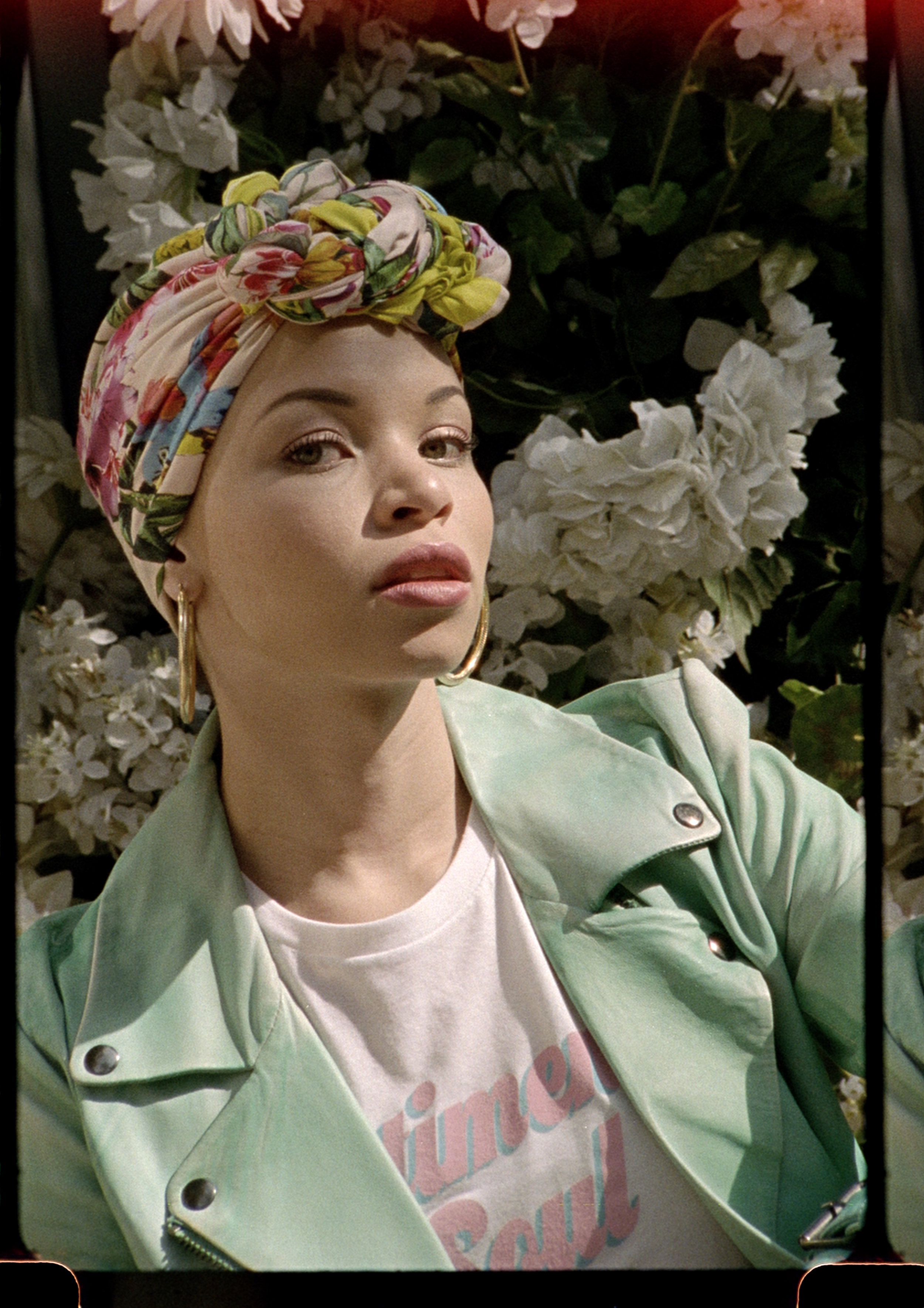5 Myths About Bisexuality, Busted

Words by Cristina Cala. Photo by Virginia Kluiters for The Why Women Project.
#BisexualAwarenessWeek may be over, but be sure to keep bi+ visibility a priority throughout the year. Here are five myths about bisexuality, busted.
1. Bisexuality is not a phase.
This one tops the list because it’s one of the most common, (completely false and biphobic) misconceptions about bisexuality (traditionally defined as sexual attraction to both men and women but which we will expand the definition of to bi+ for our purpose of including pansexual, fluid, queer, trans and nonbinary/no label identities). Being attracted to more than one gender—or gender identity, for people with trans, nonbinary or genderfluid identities—is not a fluke.
“Being attracted to more than one gender—or gender identity—is not a fluke. It’s not something that will pass. Bisexual people are not confused.”
While it could be “experimental” in the sense of the process of discovering and defining (or choosing not to define) sexual identity—labeling someone’s preferred bisexual identity as “just experimenting” is reductive. (So please don’t do it.) It’s not something that will pass. Bisexual people are not confused. But they might be conditioned to erase their very identities as a result of heteronormativity around them. (More on that later.)
2. Bisexuality is not an indicator of relationship status.
If you’re bi+ you can be: partnered or single. Monogamous or polyamorous. With a male, female, trans, genderfluid or nonbinary partner. And yep, regardless of who you’re in a relationship with (for example, bi women in relationships with men or bi men in relationships with women), you’re still queer—which goes back to the point that—you guessed it—it’s not a phase.
“Regardless of who you’re in a relationship with (for example, bi women in relationships with men or bi men in relationships with women), you’re still queer.”
Dating can be difficult for bisexual people because of the mythical fear or false assumption that they’re more likely to “switch teams,” or the harmful misconception that they’re not to be trusted or taken seriously as “relationship-worthy.” These are biphobias that exist in both hetero relationships and the LGBTQ+ community, reinforce the black-and-white binary of gay or straight, and vilify bisexual people. And yet, bisexual women are less protected than both straight and lesbian women, with higher lifetime chances of rape, sexual abuse, physical violence or being stalked by a partner.
“Being bi+ doesn’t make someone less capable or less deserving of being in a relationship, being loved, or loving someone.”
Broad-stroking a behavior or trait like loyalty (to a person or to the hetero/homosexual binary) as less likely for a specific sexual identity is a generalization that favors monogamy (rooted in heteronormativity), and it excludes polyamory as an option.
Bottom line: Being bi+ doesn’t make someone less capable or less deserving of being in a relationship, being loved, or loving someone.
3. Bisexuality is not an invitation.
Bisexuality is a valid identity regardless of past sexual history, and it isn’t an open forum for personal, prying questions.
“Asking a bisexual or bi+ person to defend or prove their identity with past sexual history is never OK. You don’t have to answer.”
Nevertheless, people who identify as bisexual get asked a lot of identity-challenging (read: rude) questions about the validity of their sexual preferences and or experiences.
“But have you ever been in a relationship with/kissed/hooked up with/had sex with/loved a [insert gender]?”
Asking a bisexual or bi+ person to defend or prove their identity with past sexual history is never OK. You don’t have to answer.
4. Bisexuality is not an opportunity for erasure.
Now you know some bi+ people may appear to be gay, lesbian or straight-passing based on their current partner, but that doesn’t erase their bisexual identity. As alluded to earlier, erasure or self-erasure can happen as a result of communities and cultures bisexual people exist in, so if those spaces are largely straight or LGBTQ+, bisexuality may be overlooked. As much as biphobic thinking wants you to, you don’t have to “pick a side,” so never feel pressured to if you think you might be bi or bi+.
“As much as biphobic thinking wants you to, you don’t have to ‘pick a side,’ so never feel pressured to if you think you might be bi or bi+. ”
Bi women can also experience another, very serious form of erasure. The hypersexualization of bisexual women objectifies, dehumanizes—and normalizes violence against them. And many resources for sexual violence focus more on straight or lesbian women, erasing the existence of bisexual people who equally deserve a space to turn to, grieve and feel safe.
Trans people, people of color and disabled people who are bisexual are at higher risk than other bisexual people for sexual violence, with bi trans women at the highest rates of sexual violence.
5. Bisexuality is not for the male gaze.
“Bisexuality is not someone else’s conquest.”
Speaking of hypersexualization and unsolicited questions, bisexuality is not an invitation to fetishize, request a threesome, suggest group sex, or watch them participate in a bisexual experience. Bisexuality is not someone else’s conquest. PERIOD.
Editor, The Why Women Project





